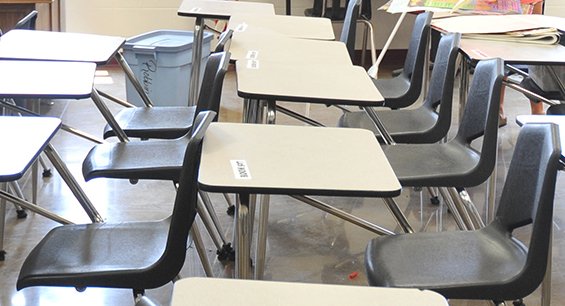Arkansas' traditional school districts and open-enrollment charter school systems have received notice of the grant amounts they are likely to receive as a result of the federal Coronavirus Aid, Relief and Economic Security Act.
The preliminary allocations to the state's school systems for offsetting the impact of the covid-19 pandemic range from $13,298 for the Northwest Arkansas Classical Academy with campuses in Bentonville and west Little Rock, to $6,595,135 for the multicampus Little Rock School District.
Elsewhere, the Springdale School District, which has the state's largest student enrollment, can expect $4,378,585. The Fort Smith School District is looking at just over $4.3 million. The North Little Rock district will be entitled to about $3.3 million while the Pulaski County Special School District can expect $2,683,521, according to information from the Arkansas Division of Elementary and Secondary Education.
Jonesboro is to receive almost $2.2 million. The Pine Bluff district is expected to receive $1.8 million.
The only public school system that isn't eligible for the relief money is the Haas Hall Academy charter school system in Northwest Arkansas because it doesn't accept federal Title I money, which is the long-standing and largest source of traditional federal aid to school districts.
Arkansas' private elementary and secondary schools can benefit from the federal funding -- not in direct payments, but in the form of services provided in consultation with their local public districts.
The newly announced allocations for the Arkansas schools come from the $13.2 billion Elementary and Secondary School Emergency Relief Fund -- a provision of the more than $2 trillion federal CARES Act package passed by Congress and signed by the president in March.
Arkansas Division of Elementary and Secondary Education leaders applied for $128,758,638 in funds on May 12, received approval from the U.S. Department of Education on Thursday and hosted a webinar Monday advising districts on applying for shares of the nearly $128.8 million. The state can reserve a portion of that total for its expenses and initiatives.
The applications, which do not require local school board approval, are due by May 29, Deborah Coffman, Arkansas assistant commissioner for school accountability, told school system leaders on the webinar. The school district applications only have to identify the general categories in which a district might want to spend the grant money.
The categories are food security, direct student support and continuous learning opportunities, technology and systemic procedures that enable a district to become better for its students.
The school systems must obligate the money by September 2022.
John Bacon, chief executive officer of the five-campus eSTEM Public Charter School system, said Monday that he anticipates using the special federal dollars on technology hardware and software purchases.
The eSTEM system distributed about 400 computer devices to students when school buildings were shut down in mid-March to slow the spread of the covid-19 disease, and students and teachers were directed to work from home.
Bacon said the federal money could be used in part for the replacement and repair of the devices as well as the purchase of English/language arts curriculum software that would be "more portable" for using in homes if that is necessary.
Student support, such as after-school programs to help students catch up on lessons missed while school buildings have been closed, is another possible use, Bacon said.
The charter system is to receive about $520,962.
In the Watson Chapel School District, the federal money will likely be used to purchase some 1,250 Chromebook computers, Superintendent Jerry Guess said. The Jefferson County district is to receive $720,344.
Other possible expenditures include purchasing and permanently installing internet boosters in public buildings such as churches, training teachers on how to use distance learning platforms, reimbursing the district for recent purchases such as internet hot spots, and acquiring personal protective equipment and related resources.
"The first priority is try to help these kids," Guess said, adding that the district has to be ready for any number of school scenarios in the fall.
"These [alternative methods of instruction] lessons have been largely a review of what has already been taught. If we are not in school in August, we have got to start new learning. We have to try to make up ground we lost in the past six weeks, and then we have to proceed with new learning so that a kid who is in ninth grade and needs algebra receives as much algebra instruction [at home] by the end of the fourth quarter as if he had been in school every day."
Mike Poore, superintendent of the Little Rock School District, said Monday that it is too early to know how the district will spend the federal money.
"We will begin by checking all four categories of areas that you can seek support for," he said about the application form.
The district, which includes within its boundaries several private schools, expects to get information later this week on how it is to provide support to those private schools, Poore said.
The first payments of the federal money to the districts will be in mid-June, and there will be two payments per month in July, August and September before reverting to once a month beginning in October, state officials said Monday.
"This should be about strictly educating kids," Coffman said, in advising against using the money to buy lawn equipment, school buses and power generators. But she also said the parameters for spending the grants are broad and that good documentation on how a district's use of money is related to offsetting the effect of covid-19 shutdowns may justify an unusual expense.
The law more specifically bars using the money to subsidize or offset executive salaries and benefits of individuals who are not employees of a state education agency or school district, as well as for expenditures related to state or local teacher or faculty unions or associations.
A Section on 05/19/2020
